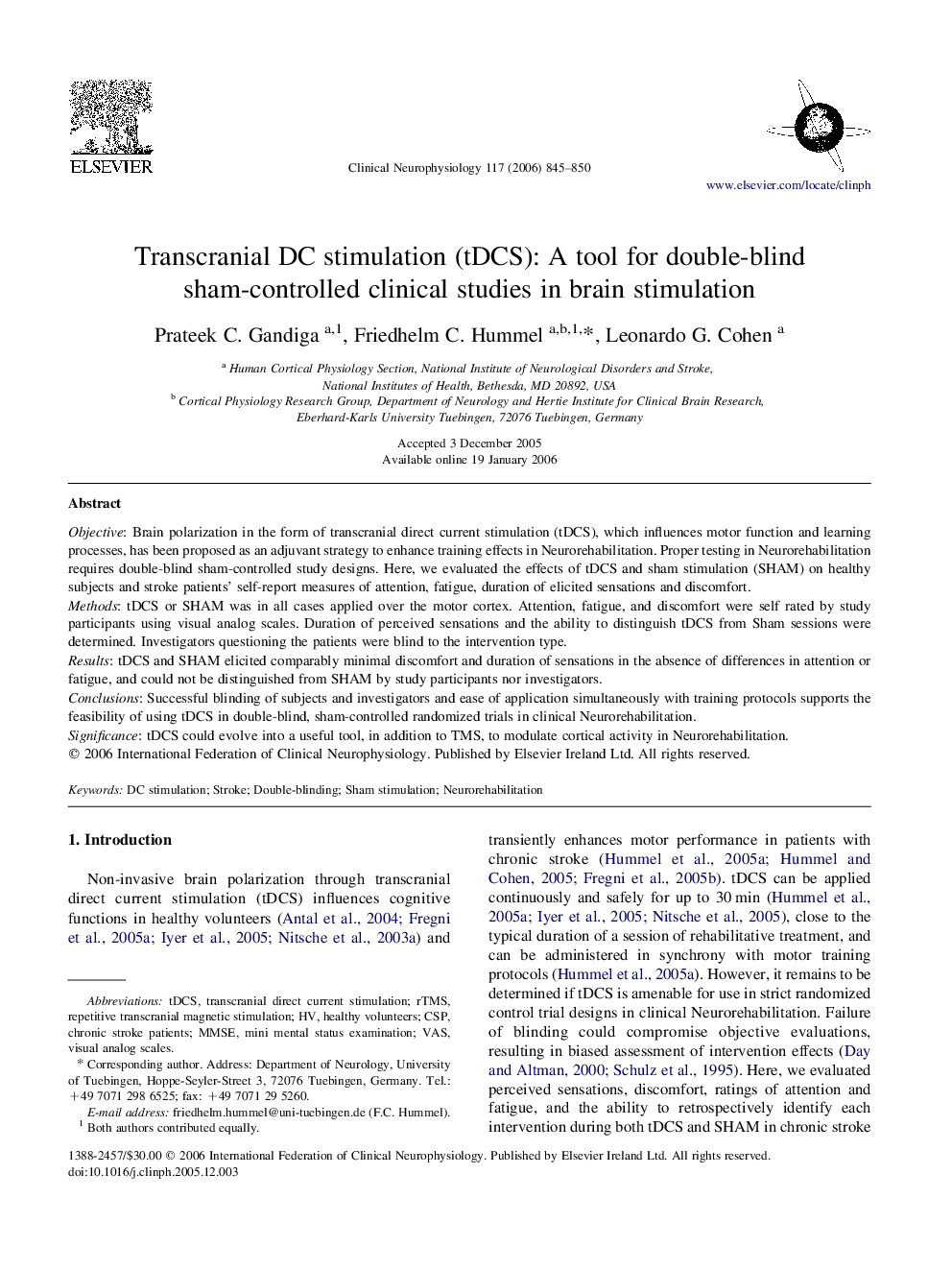| Article ID | Journal | Published Year | Pages | File Type |
|---|---|---|---|---|
| 3048242 | Clinical Neurophysiology | 2006 | 6 Pages |
ObjectiveBrain polarization in the form of transcranial direct current stimulation (tDCS), which influences motor function and learning processes, has been proposed as an adjuvant strategy to enhance training effects in Neurorehabilitation. Proper testing in Neurorehabilitation requires double-blind sham-controlled study designs. Here, we evaluated the effects of tDCS and sham stimulation (SHAM) on healthy subjects and stroke patients' self-report measures of attention, fatigue, duration of elicited sensations and discomfort.MethodstDCS or SHAM was in all cases applied over the motor cortex. Attention, fatigue, and discomfort were self rated by study participants using visual analog scales. Duration of perceived sensations and the ability to distinguish tDCS from Sham sessions were determined. Investigators questioning the patients were blind to the intervention type.ResultstDCS and SHAM elicited comparably minimal discomfort and duration of sensations in the absence of differences in attention or fatigue, and could not be distinguished from SHAM by study participants nor investigators.ConclusionsSuccessful blinding of subjects and investigators and ease of application simultaneously with training protocols supports the feasibility of using tDCS in double-blind, sham-controlled randomized trials in clinical Neurorehabilitation.SignificancetDCS could evolve into a useful tool, in addition to TMS, to modulate cortical activity in Neurorehabilitation.
